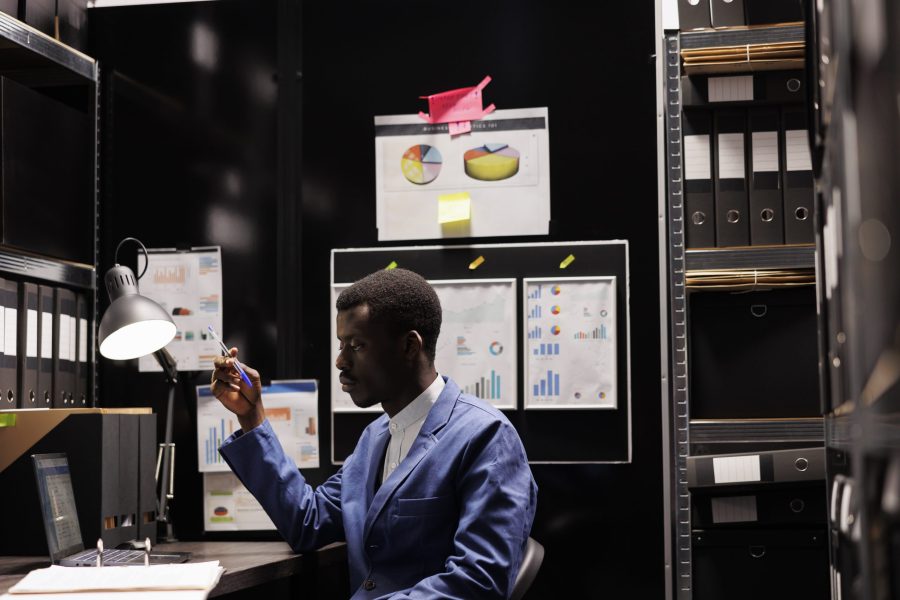In today’s world, businesses are expected to do more than just generate profit. They are being called to create long-lasting value, value that respects people, the planet, and purpose. At the core of this transformation is technology.
Over the years, innovations such as Artificial Intelligence (AI), the Internet of Things (IoT), Big Data, and Cloud Computing have redefined how businesses operate, scale, and adapt. But beyond enhancing productivity and performance, technology is now a critical driver of sustainability.

How Technology Drives Business Sustainability
Technology is transforming how businesses approach sustainability. From smart infrastructure to AI-powered supply chains, companies are leveraging digital tools to minimize waste, optimize resource management, and meet environmental, social, and governance (ESG) expectations. However, this digital transformation is not without its challenges, energy consumption, e-waste, and carbon footprints must also be considered. Technology can be a double-edged sword: when used responsibly, it drives sustainability; when mismanaged, it can harm the environment.
The key question is no longer whether technology can support sustainability, but how businesses can use it intentionally, responsibly, and for lasting impact.
1. Optimizing Operations
One of the most direct ways technology supports sustainability is by making business operations smarter and more efficient.
- AI and Machine Learning: These technologies power everything from accurate inventory forecasting to energy usage analytics. They help businesses reduce overproduction, minimize downtime, and streamline supply chains.
- Remote Work and Cloud Platforms: Virtual collaboration tools have reduced the need for travel, paper-based processes, and extensive office spaces, cutting costs and lowering carbon footprints.
- Data-Driven Decision Making: With real-time insights, businesses can identify inefficiencies and make proactive adjustments, transforming operational sustainability from a guessing game to a science.
2. Minimizing Environmental Impact
Technology enables businesses to monitor, measure, and reduce their environmental footprints.
- Smart Infrastructure: IoT devices monitor energy consumption in real time, while automated systems adjust lighting, temperature, and water usage.
- Sustainable Data Management: Green cloud solutions and energy-efficient data centers reduce the environmental impact of digital operations.
- Environmental Monitoring Tools: Platforms for carbon management, e-waste tracking, and compliance reporting help businesses stay accountable and transparent.

Yet, the benefits must be balanced against the energy demands of data centers and digital tools. Green computing and efficient data infrastructure are essential for reducing technology’s environmental cost.
3. Leveraging Innovative Solutions
Sustainability is not just about minimizing harm, it’s about rethinking how value is created and delivered.
- Blockchain for Supply Chain Transparency: This technology ensures ethical sourcing and traceability of materials.
- Circular Economy Platforms: Companies can reuse, recycle, and reduce waste throughout the product lifecycle.
- Advanced Materials: Innovations like biodegradable packaging, algae-based plastics, and 3D printing reduce waste and promote sustainable production.
Innovation is not just a tool for sustainability, it’s a competitive advantage.
4. Overcoming Challenges in Sustainable Technology
Despite its potential, integrating technology into sustainability strategies is not without difficulties:
- High Initial Costs: Advanced technology and infrastructure investments can be a barrier, especially for small and medium-sized enterprises (SMEs).
- Energy Consumption: The digital economy, including AI and data centers, can generate significant energy demands.
- E-Waste Management: Rapid technological advancements lead to increasing electronic waste.
- Skill Gaps: Expertise in green IT, ESG strategy, and data analysis is essential but often lacking.
However, these challenges can become opportunities. With strategic planning, proper investments, and transparency, businesses can turn obstacles into pathways for growth.
The Future of Sustainable Technology
As technology evolves, so does its potential to drive sustainability:
- AI for Sustainability: Tools that optimize energy use, minimize waste, and simulate environmental impacts.
- Blockchain for Ethics: Transparent supply chains ensure ethical sourcing and sustainable practices.
- Circular Economy Solutions: Platforms that support reuse, recycling, and product-as-a-service models.
- Carbon Management Software: Tools that help businesses monitor, reduce, and offset their carbon footprints.
- Green Software Engineering: Writing efficient, low-energy code for digital solutions.
Sustainability is no longer just a matter of compliance, it’s a competitive edge. Businesses that thrive will be those that embrace technology not as a cost but as a catalyst for measurable, meaningful change.
When technology aligns with purpose, the impact is clear: reduced emissions, smarter operations, stronger brands, and a future that benefits both businesses and the planet.
Final Thoughts
The choice for businesses today is not whether to adopt sustainable technology, but how quickly and boldly they can innovate. To stay updated on the latest in sustainable business technology, subscribe to our newsletter at http://www.sidmach.com.






